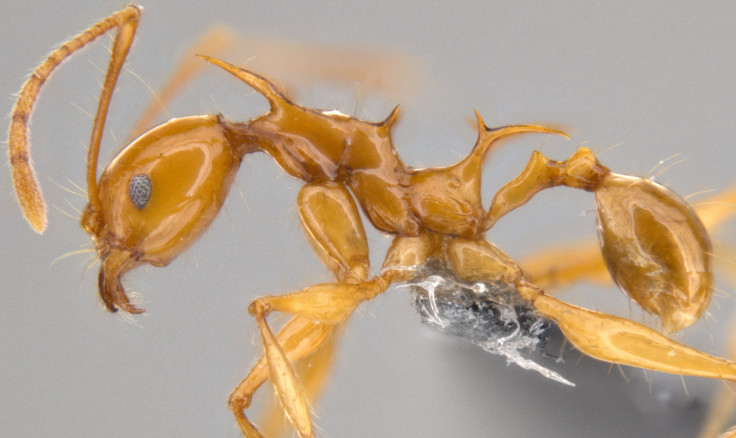Dragon Ants: Scientists Discover Ants That Look Like Khaleesi’s Dragons In ‘Game Of Thrones’

Scientists have discovered two new species of ants in the tropical rain forests of Papua New Guinea and Fiji, which they say bear striking similarity to Daenerys Targaryen’s dragons in the HBO TV series, “Game of Thrones.”
The “Pheidole drogon” worker ants or the “Pheidole viserion” are being referred to as “dragon ants” because they reminded the scientists studying them of the Khaleesi’s three pet dragons, in particular Drogon and Viserion. With spikes poking up from their backs, the ants possess spines that are dramatically different from regular ants.
The study comprises two research papers that were published Wednesday in the journal PLOS ONE. The authors — Georg Fischer, Eli Sarnat and Evan Economo — used newly invented 3D-imaging technology “to help identify and document several new ant species.” The technology is similar to regular CT scans, but was intensified “to a much higher resolution suitable for smaller objects, such as an ant.”
“This is one of the first studies in ant taxonomy to use micro-CT,” Economo, a researcher at the Okinawa Institute of Science and Technology Graduate University, Japan, said in a statement. “While this method is gaining popularity in different scientific fields, it is rare to use it in this way.”
Trying to explain the odd spinal structure, Sarnat told the Christian Science Monitor in an interview: “The common assumption is that the spines are for defense against predation.”
These ants have sharp, curved spines that can get hooked in the throats of those trying to snack on them, he added.
In another theory, Sarnat explained that the worker ants were divided into two categories — major and minor workers. While the minor ants are similar to regular ants in proportion, the majors have a distinctly large head that supports large mandibles (jaws), which help them break up tougher food resources for the colony.
Therefore, Sarnat and fellow scientists believe that “perhaps the spines on the shoulders evolved in the majors to [make space for] more muscles that could be used to help support these oversized heads.”
© Copyright IBTimes 2024. All rights reserved.






















